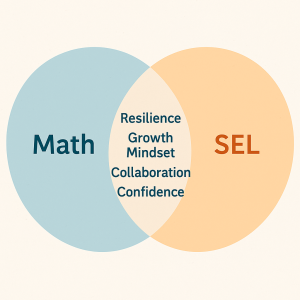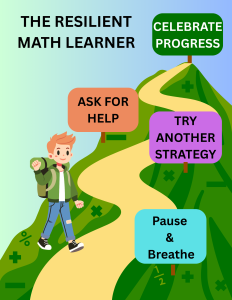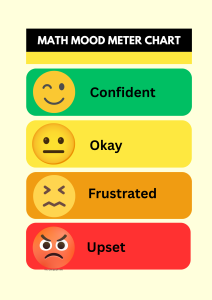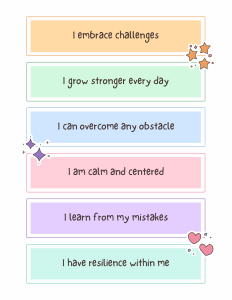6 Growth Mindset and Social-Emotional Learning in Math
While math is often viewed as a strictly cognitive domain, success in math learning is deeply connected to a student’s emotional experience. Many students face challenges such as math anxiety and low self-confidence, which can hinder both engagement and achievement. By integrating Social-Emotional Learning (SEL) into math instruction, teachers can create a classroom culture where students feel safe to take risks, persevere through challenges, and develop a positive relationship with math.
SEL fosters essential skills like self-awareness, self-management, responsible decision-making, relationship skills, and social awareness, all of which are foundational to developing resilient, motivated math learners.

Integrating SEL into math instruction supports both academic and personal growth. Each core SEL competency contributes uniquely to students’ success in math. Self-awareness helps students recognize emotions such as frustration or confusion, while also allowing them to identify their strengths and areas for growth in math. Self-management enables students to regulate their emotions during difficult tasks, using strategies like deep breathing, positive self-talk, or goal setting to stay engaged. Social awareness plays a role in valuing other’ problem-solving approaches during math talks and developing empathy through group work and peer review. Relationship skills are nurtured through collaborative work in math stations and learning to both give and receive constructive feedback effectively. Finally, responsible decision-making empowers students to select suitable strategies for problem-solving, reflect on their mistakes, and be open to trying new approaches. Together, these competencies foster a supportive environment where students can build confidence and resilience in their math learning.
Incorporating SEL into math instruction creates a more supportive and engaging learning environment. One effective approach is to begin each math block with a quick SEL check-in, such as asking students how they feel about the upcoming lesson or inviting them to select an emoji that reflects their math mindset. This routine builds self-awareness and encourages emotional reflection. Tools like a Math Mood Meter or a digital platform such as Padlet can support these check-ins. Another powerful strategy is to teach and model positive self talk. Encouraging students to use affirming phrases like “I can try another way” or “Mistakes help me learn” fosters resilience.
Growth mindset activities further strength students’ belief in their ability to improve. Resources like Radio 4 in Four – How mistakes make you smarter – BBC Sounds” and the book, The Girl With a Mind for Math by Julia Finley Mosca can spark meaningful discussions and reflections on perseverance. Collaborative structures such as Think-Pair-Share or Number Talks provide opportunities for students to express their thinking, ask questions, and build on each other’s ideas in a safe and supportive space.
Following challenging tasks, students benefit from structured reflection. Prompts like “What helped you stick with it?” or “What did you learn about yourself as a problem solver?” enhance self-management and metacognitive skills.
A weekly routine that blends SEL and math can deepen these connections. For example, Monday might focus on self-awareness with math check-ins and goal setting, while Tuesday emphasizes self-management during math stations that include emotion regulation cues. On Wednesday, students could practice social awareness through partner problem-solving with time to reflect on their collaboration. Thursday could be dedicated to growth mindset with a journal entry about a meaningful mistake, and Friday might wrap up the week with a celebration circle, where students receive notes or stickers highlighting their progress. By embedding SEL practices into daily math instruction, educators help students build not just academic skills, but the emotional tools needed to thrive as resilient, confident problem solvers.



